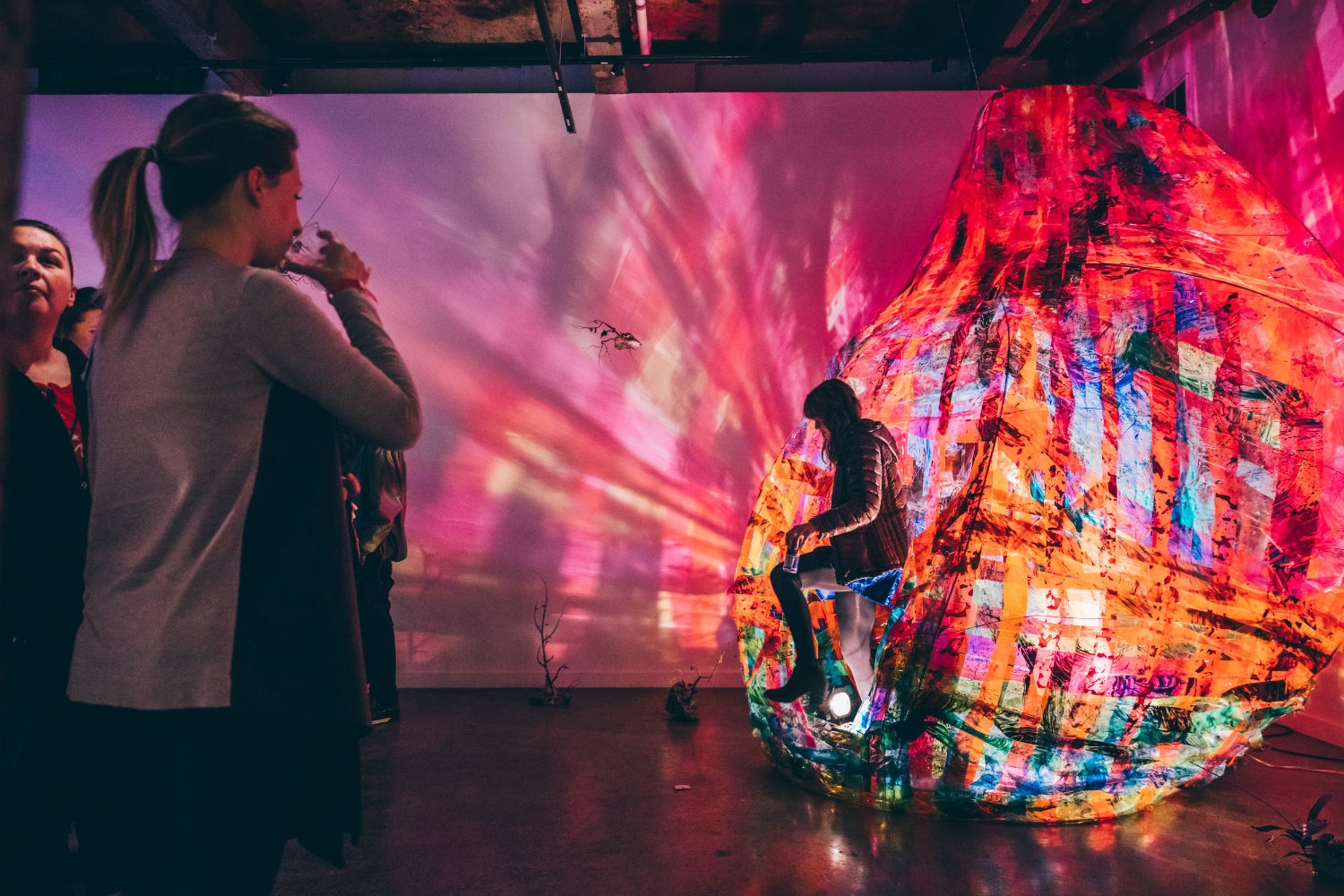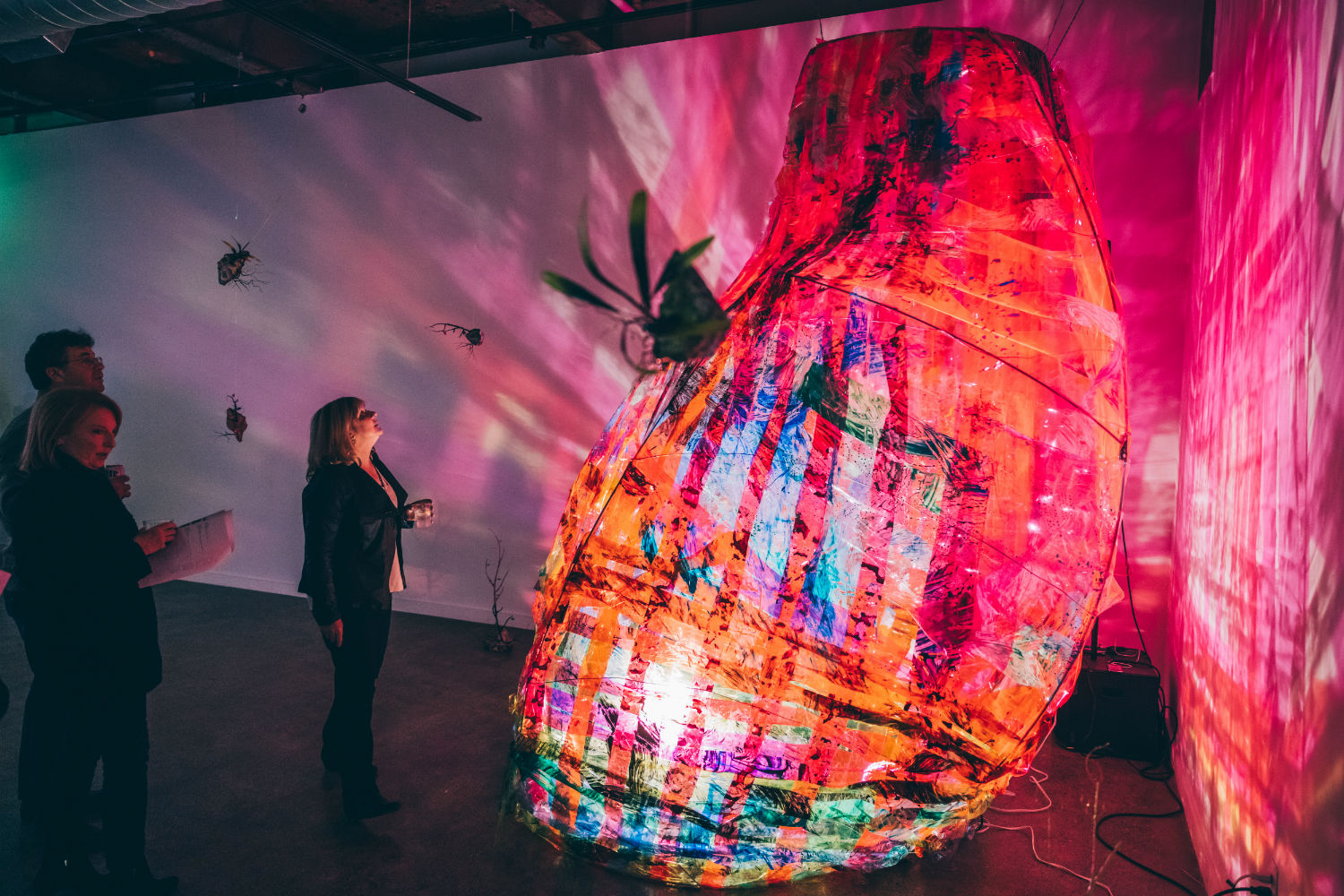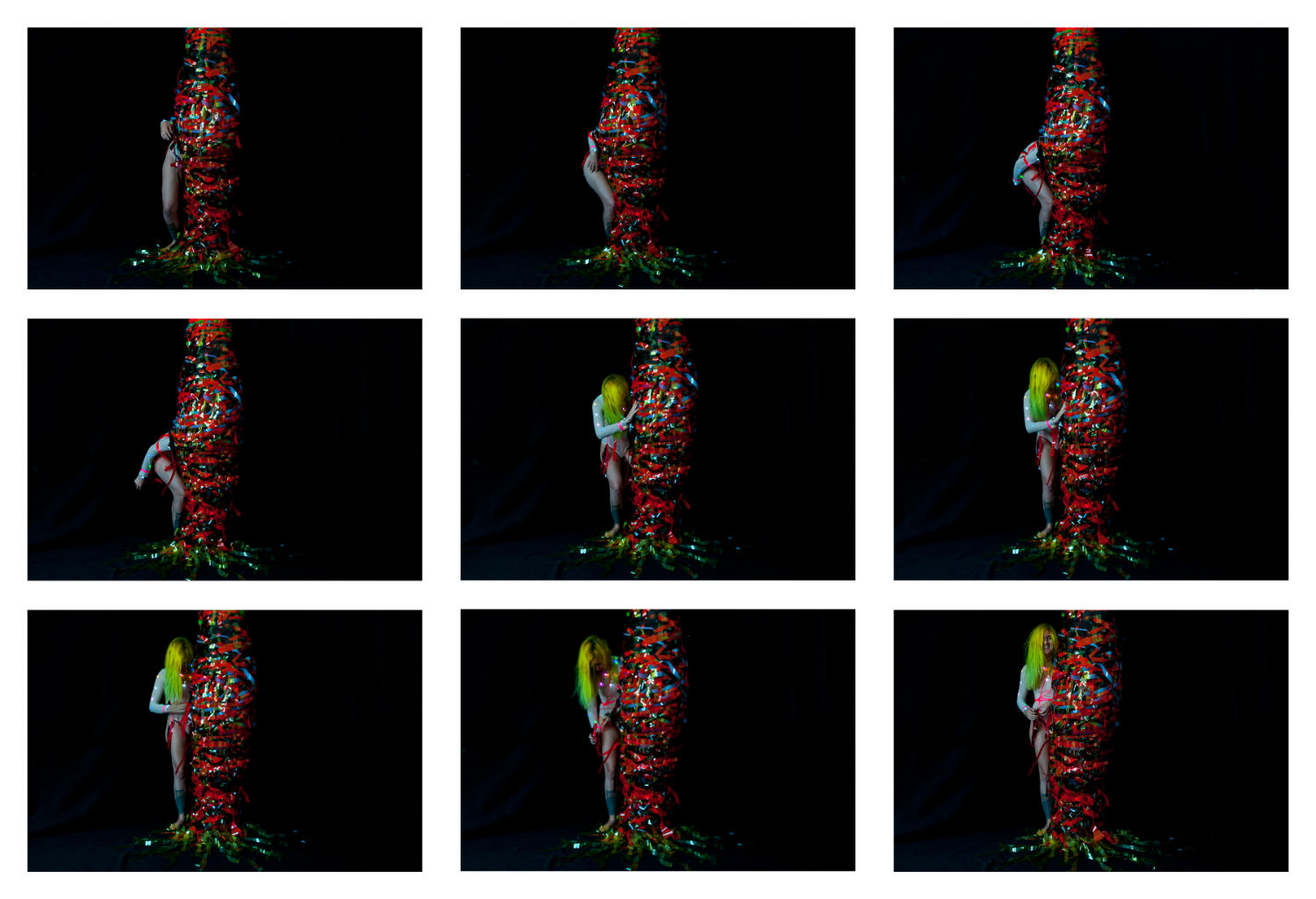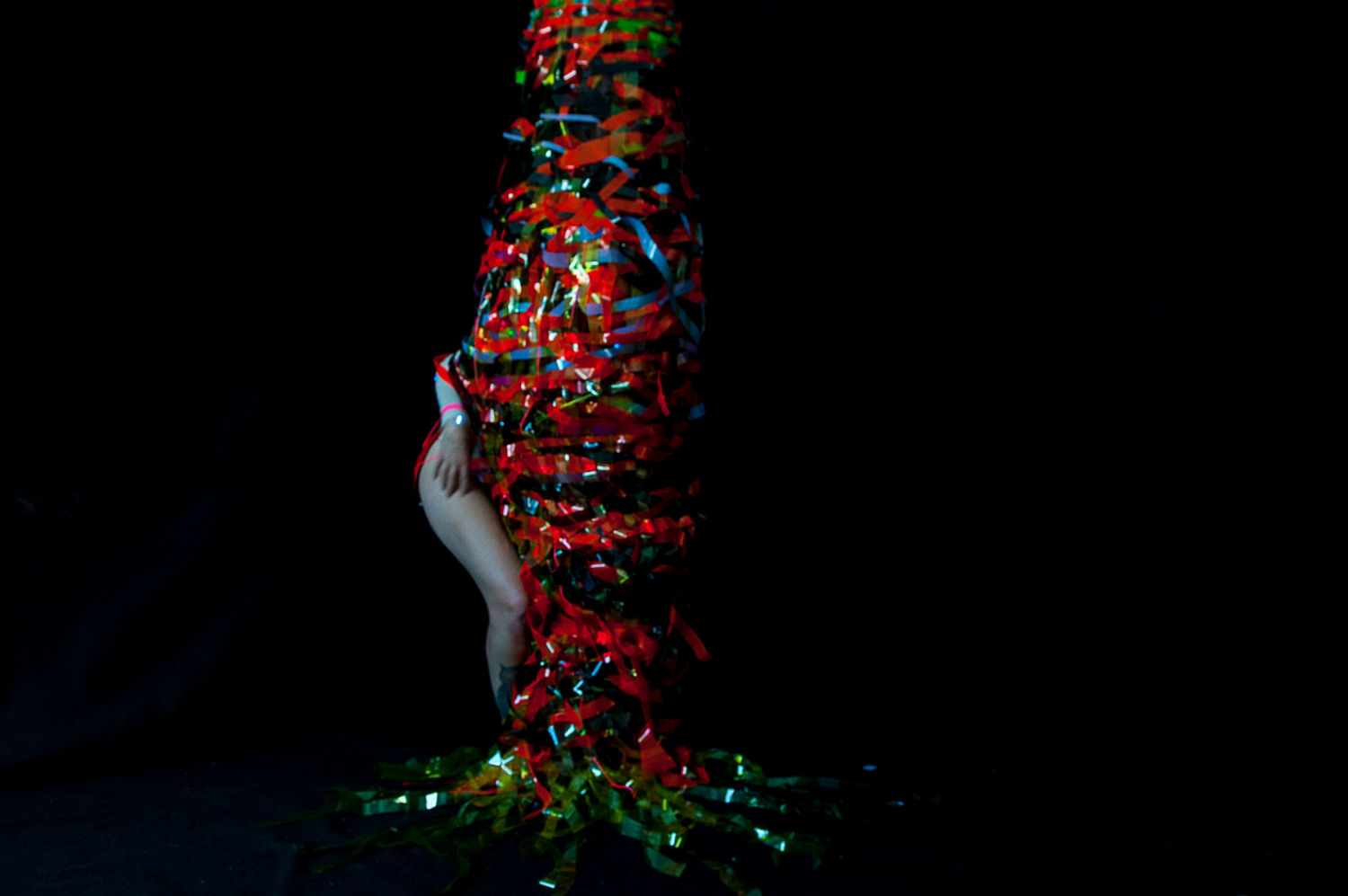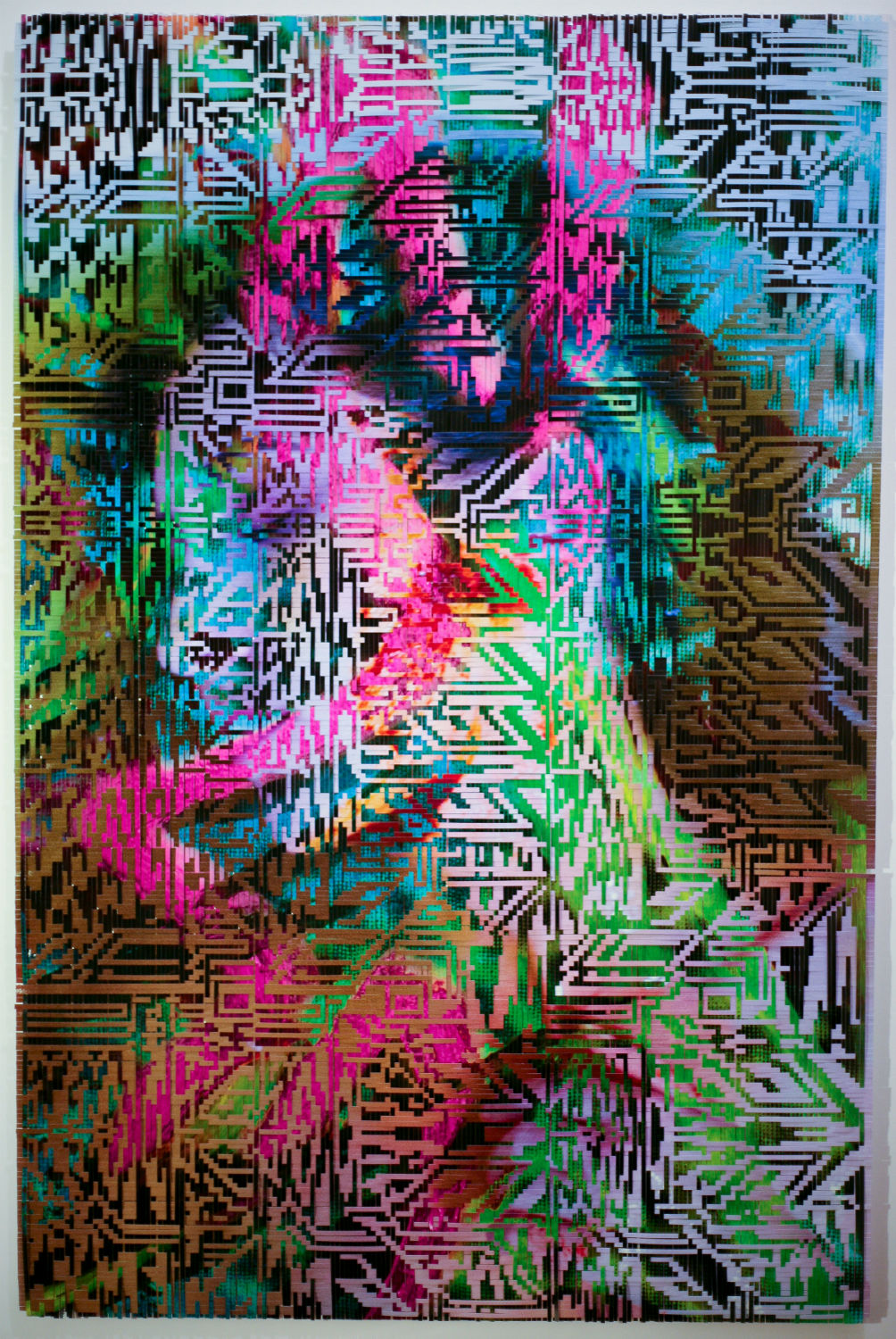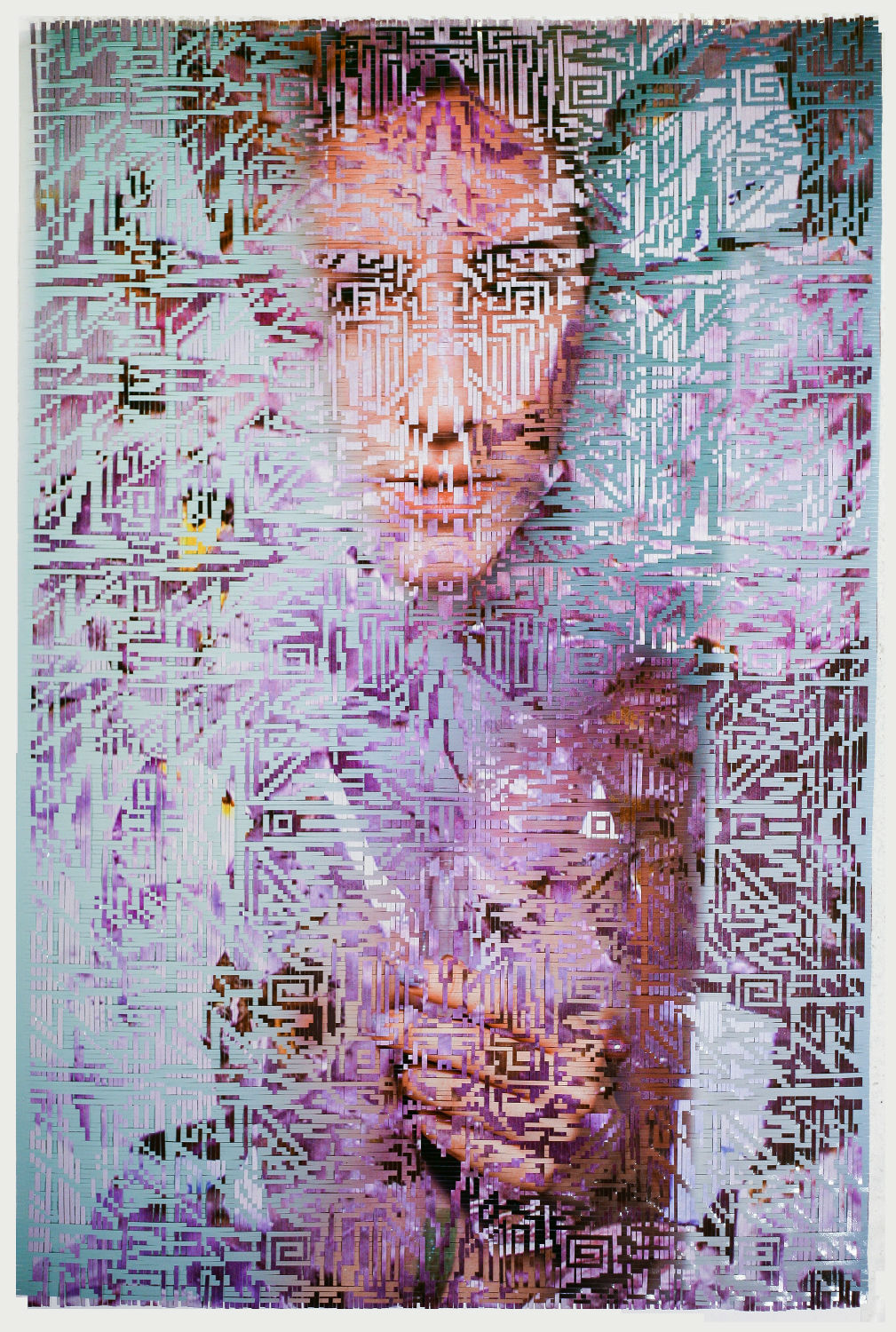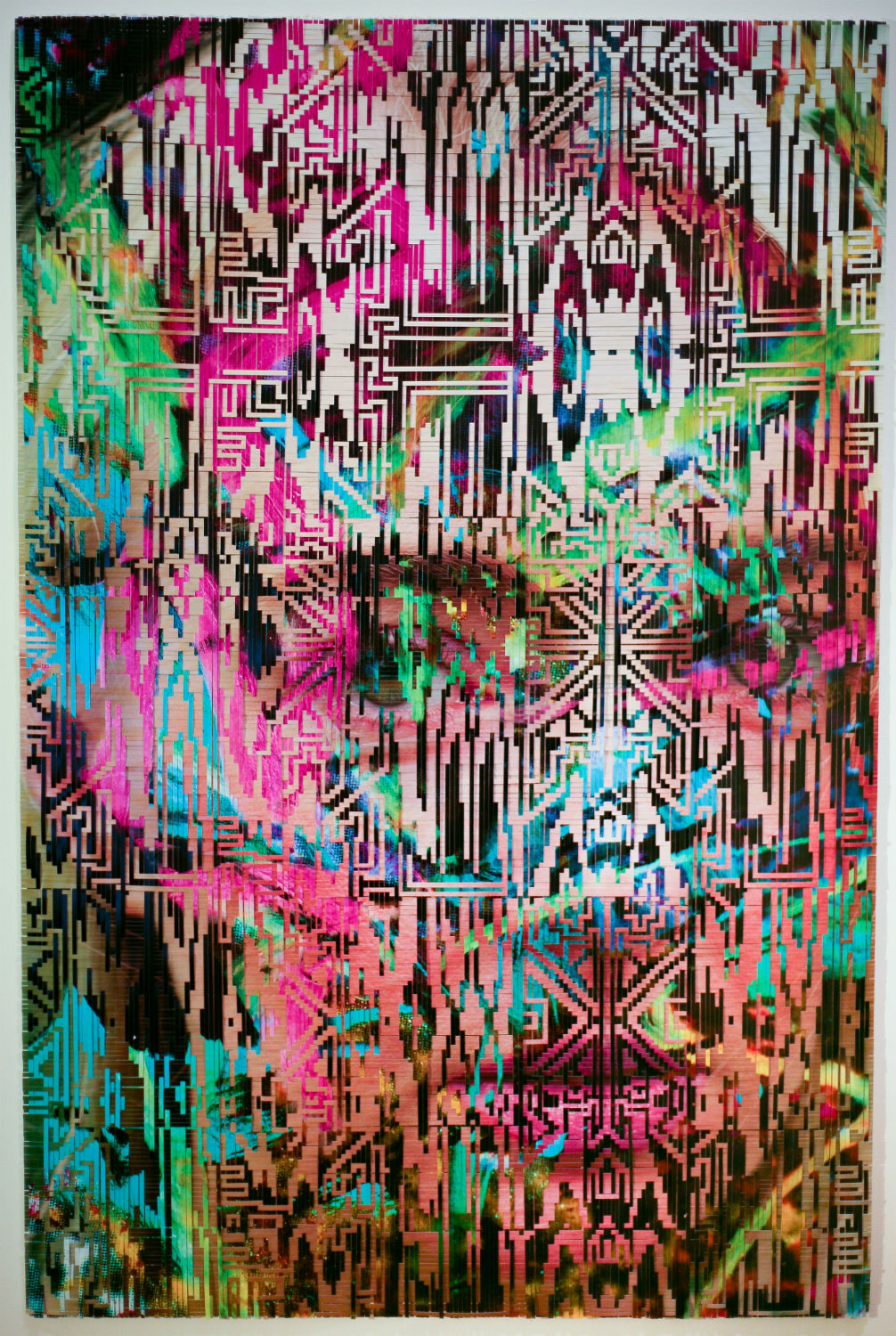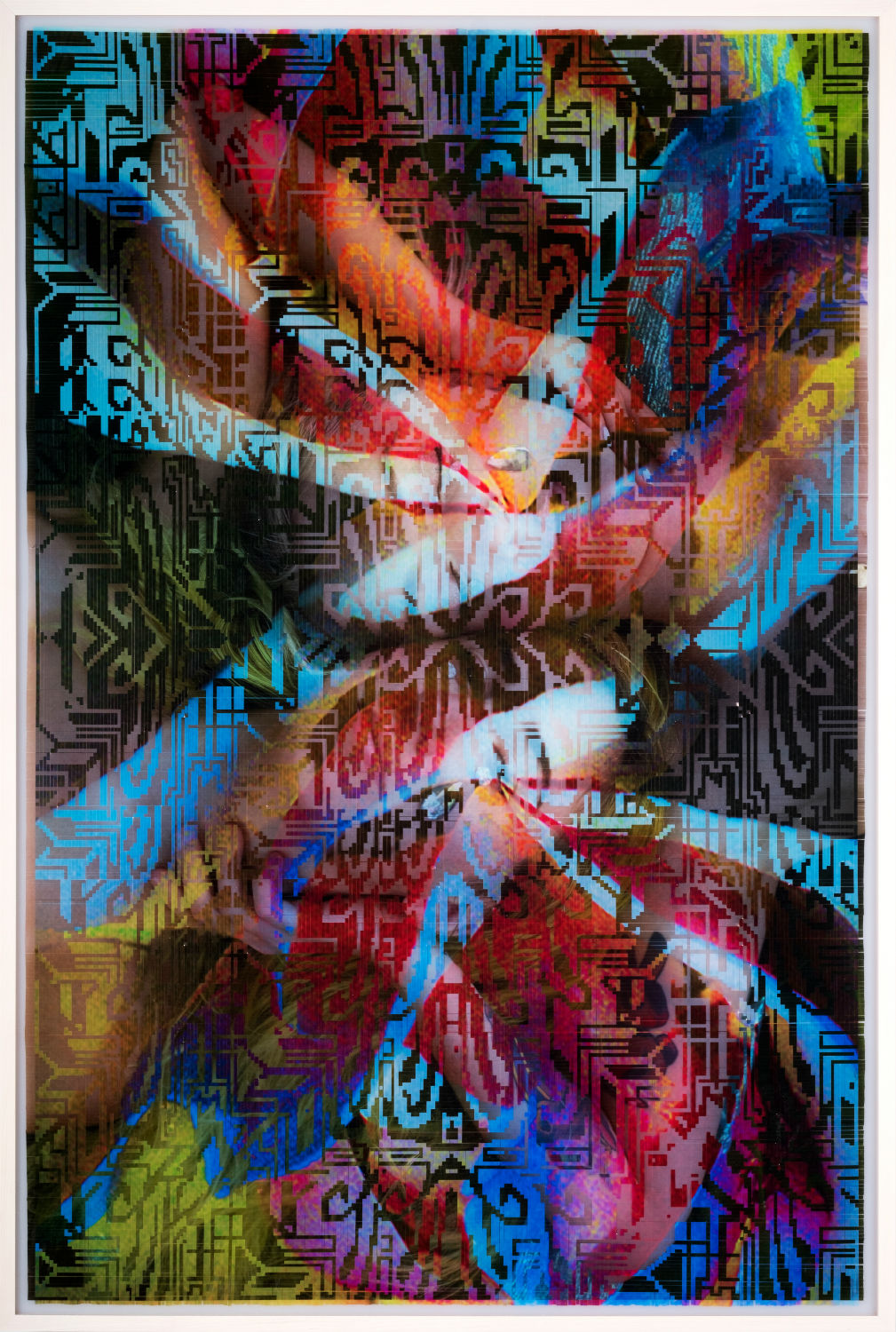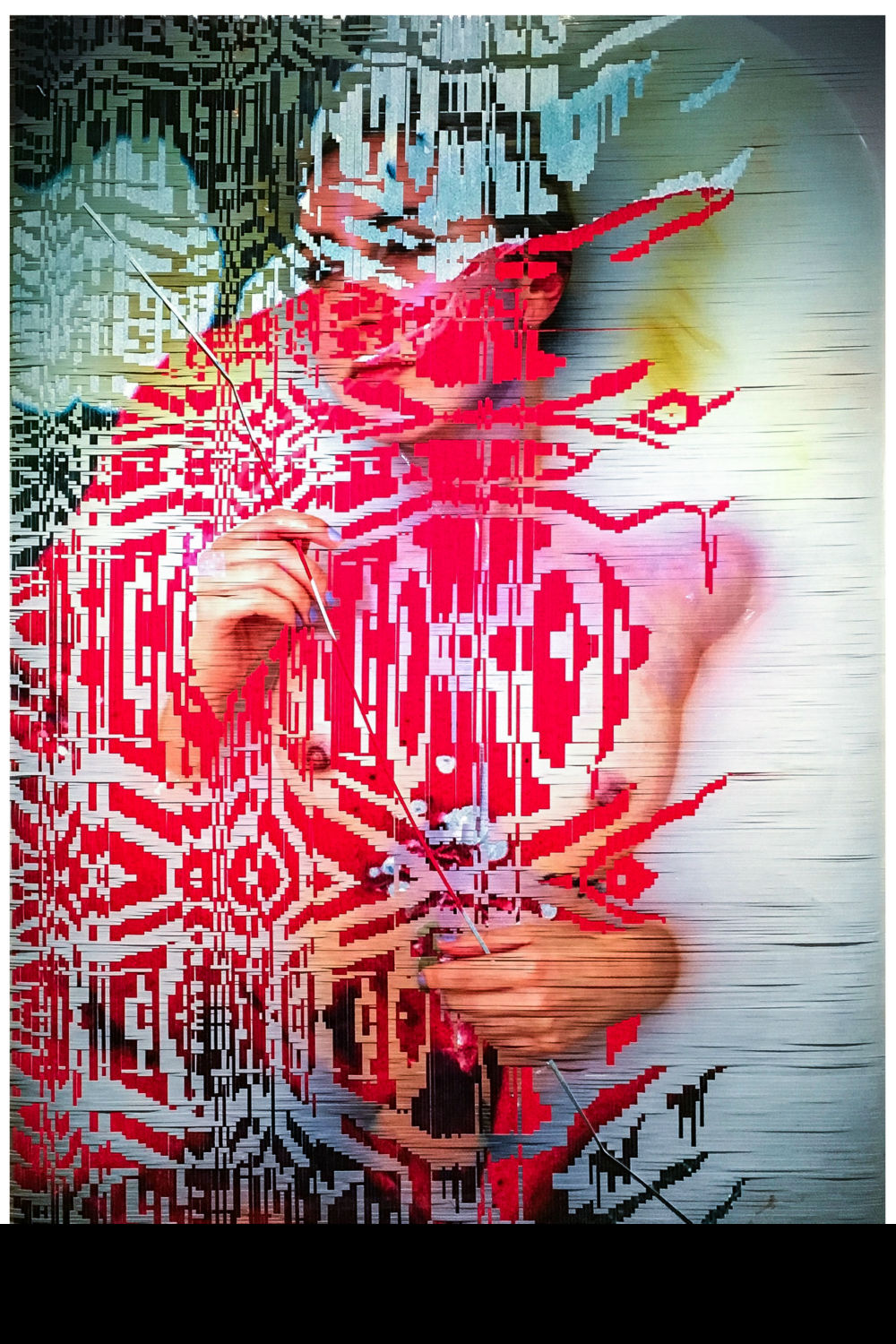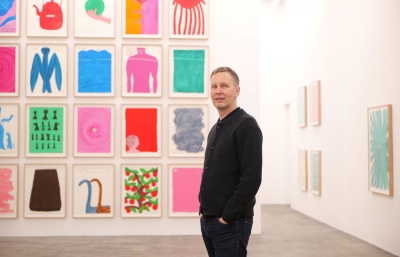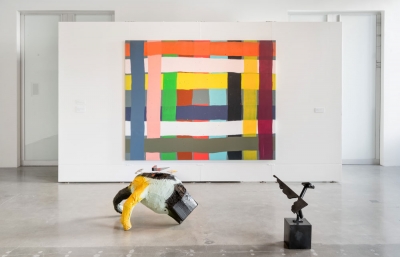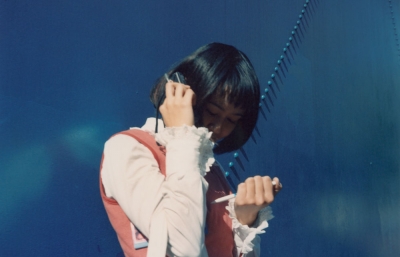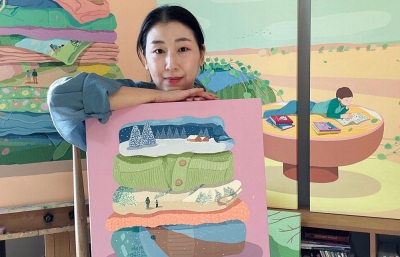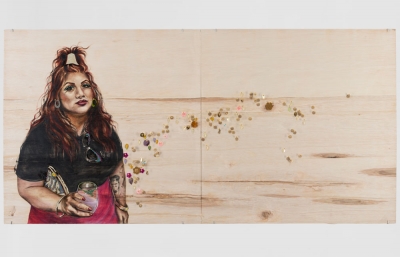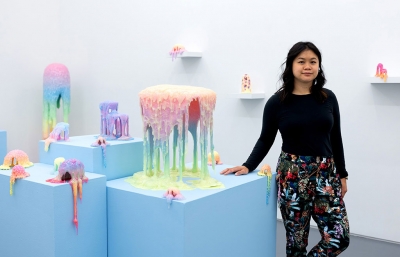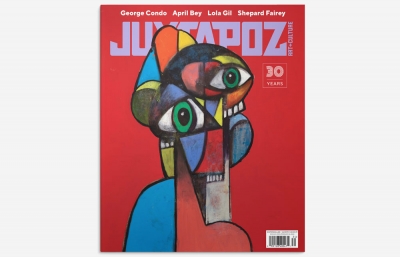Lala Abaddon’s neon green hair was visible from down the block just before a mutual friend introduced us on a Detroit street lined with murals and a spooky, flickering lamplight. In the midst of a residency at Red Bull’s House of Art, Lala’s woven photographs and sculptures hit a new level as she soaked up the creative community vibes.
Her work delves deep into the female experience and the juxtaposition of dark and light, while experimenting with unique materials. She has her hands in nearly every art form, and what’s most impressive about Lala is her drive to make visible the unseen.
Kristin Farr: Where are you right now?
Lala Abaddon: I’m in upstate NY where I have a permanent space at my grandpa’s place. He’s in a wheelchair and lives on the ground floor of his house so, over the past ten years, I’ve taken over the top floor, basement and garages. They’re all my studios, and I come up here often. I’ll be here for the next six months between traveling, and I don’t miss the city, so I’m subletting my apartment in Brooklyn, and I can go back when I feel like it.
What were you up to just before we met last fall?
Before I got to Red Bull, I was in a residency in Jacksonville, Florida with my longtime friends, Stevie and Aaron. Stevie’s one of my muses; she’s in most of my work. I did a performance piece where I wove myself into a cocoon for 27 hours, and that whole experience was tied to what I made at Red Bull. The lighting inside the cocoon was amazing. Light is super influential in my work and my life. I watch shadows all the time. I’m obsessed with the way light interacts with space and color. I wanted to make the next cocoon bigger so someone else could experience the same thing. Everything was pretty interactive in the show; everyone was touching the paintings and being inside the cocoon. It was kinda scary inside, a bit claustrophobic, and a bit of a commitment to go in. Most people thought it was a womb, which makes sense.
The impetus for all my woven work is this book I read called The Obscene Bird Of Night by José Donoso. It’s a magical realism book, and, over time, the main character weaves himself into this burlap sack and morphs back into a baby. It’s really weird. I started weaving my photographs, and a year after that, I realized the connection, which made me want to weave myself into this sack. A lot of my performance stuff is something I just feel I need to do.
The whole time I was making the cocoon in Detroit, I hadn’t thought about how many people would take photos inside of it. I think people are used to liminal spaces now. They’re used to existing on two planes of reality, the physical one, and then the reality in our social media world or internet, or any other screen. That’s why I want to create spaces where people can go into another realm in a physical sense. That’s a major goal of my work.
I always have music made specifically for my installations by my brother. I just kind of telepathically tell him what I want it to be, and he makes these tracks. He just knows what I want.
Tell me about the woven photographs. The patterns must involve so much counting.
Yes there’s tons, and that’s the funny thing; I’ve always been terrible at math, but I’m good at my math. I’ve had OCD for a long time, I count everything. It’s gotten a lot better since I started weaving. I don’t count my steps anymore, but I count a lot with my weaving.
Did you make your biggest weavings at the Red Bull residency?
I’ve made 60” x 40” weavings before, but I did the largest transparent weave, which is an accomplishment because they go into LED boxes, so there’s nothing securing the edges like the other pieces. With the transparent weaves, it’s crazy because you have one chance to get it on the first layer of plexi, and one chance for the second layer without letting the static electricity move the strips. That was the hardest thing I’ve ever had to do, and it was so stressful. But it turned out perfectly! The fragility is crucial because if that frame falls apart and the pieces get separated, it can be ruined forever, and that is so exciting for me.

I know you weave them by hand, but is there also a digital aspect to the process?
I use a weaving draft program, and I layer the draft with the photos in Photoshop and fine-tune it. I have to match the 200 or 300 strips of the photograph so the images are lined up. I’m always focused on the eyes and stuff like that. I follow the pattern from my computer to weave the photographs together, but at the end of last year, I started freestyling it toward the end, and I want to do more of that. I’ve also recently learned how to weave in a new way, and instead of using figurative work and weaving it together in a pattern to obscure the image, I’m going to make two abstract prints woven together to create an image. I’m always trying to change the process so it doesn’t get monotonous for me or the work. I’m trying to perfect a process, and then I get bored when it gets perfected. That’s why I’m leaning towards freestyling but keeping that digital look, which is really just a result of it being on a grid. My work also looks pixelated because I often re-photograph the images from the screen.
Where do the photos come from?
I have a large photo archive. I take photos with a macro lens, or I take photos of paintings I make. I also take portraits all the time, like thirty pictures of Stevie, and then I’ll use those for six months or so. Sometimes I’ll pair a recent photo with one I took several years ago, or sometimes I’ll reuse photos if they have significant importance to the narrative.
How does Stevie feel about appearing in a lot of your work?
I think she loves it. She’s the person who taught me to be confident in myself, and to love myself as a woman, and she’s always been encouraging to me. I never imagined we would both end up in the art world. She married a curator and they started this residency.
What’s your 2017 hair color of choice?
Purple, blue and green right now. I’ve been loving rich tones, burgundy and royal blue. I’m getting away from neons and into a more velvety feeling.
When we met, do you remember that flickering light on the street? I think you ran off to photograph it.
They replaced that lightbulb and I freaked out. It ruined the ambiance of the street.
Do your dreams still affect your work?
Totally. I had a crazy dream last night where a ghost moved me from one seat to another, and I thought, okay, I have to translate that into a piece. My dreams are always affecting my work. I have crazy ones all the time. They are in these really weird worlds. There’s one that’s all crystal and water, and one that’s floating, mossy islands with a railroad that goes between them. That stuff definitely influences the paintings of weird landscapes. I get inspiration when I go to sleep.
----
Originally published in the April 2017 issue of Juxtapoz Magazine, on newsstands worldwide and in our web store.

